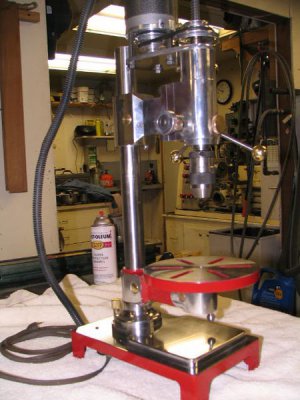Well after sitting and collecting dust for a couple years now, I finally tried using a flycutter for the first time today. :-[
Cutting some 6061 plate, so I ground up a HSS blank (10% cobalt) similar to this one but with a bit fat radius on it since I was going for a fine finish. Approx 7 degree clearance angles ground by hand.
It all went horribly - horribly wrong.
So as a test, I replaced my HSS bit with a brazed C2 lathe bit and immediately got a beautiful mirror finish.
Needless to say it looks like I'll be wearing out a few grinding wheels trying to get it right. Sigh.......
To be continued:
Cutting some 6061 plate, so I ground up a HSS blank (10% cobalt) similar to this one but with a bit fat radius on it since I was going for a fine finish. Approx 7 degree clearance angles ground by hand.
It all went horribly - horribly wrong.
So as a test, I replaced my HSS bit with a brazed C2 lathe bit and immediately got a beautiful mirror finish.
Needless to say it looks like I'll be wearing out a few grinding wheels trying to get it right. Sigh.......
To be continued:






